78th Anniversary Of D-Day Invasion Is A Reminder Of 'What A Hero Really Is'
It's impossible to sit here in 2022 and think about June 6, 1944 and what American and allied forces faced as they made their way onto the beaches of Normandy, France under orders from Gen. Dwight D. Eisenhower to accept "nothing less than full Victory!" against the Germans.
The gates on beach assault boats went down and the horror of Omaha Beach rained down on brave souls who gave their lives to this incredible country. The artillery fire started hitting boats five thousand yards from the beach.
Men went into water that ranged from waist-deep to over a man's head. Machine-gun fire rains down from the bluffs where Germans sat in concrete bunkers spraying bullets at tens of thousands of soldiers just trying to get to that beach.
It's estimated by historians that 4,414 brave allied souls lost their lives on June 6, 1944 carrying out Eisenhower's orders.
Private Carlton W. Barrett -- 18th Infantry, 1st Infantry Division -- was one of the lucky ones. The 5'4", 125-pound 24-year-old survived. And he was awarded the Medal of Honor for his actions on that day.
His Medal of Honor citation reads:
For gallantry and intrepidity at the risk of his life above and beyond the call of duty on 6 June 1944, in the vicinity of St. Laurent-sur-Mer, France. On the morning of D-day Pvt. Barrett, landing in the face of extremely heavy enemy fire, was forced to wade ashore through neck-deep water.
Disregarding the personal danger, he returned to the surf again and again to assist his floundering comrades and save them from drowning. Refusing to remain pinned down by the intense barrage of small-arms and mortar fire poured at the landing points, Pvt. Barrett, working with fierce determination, saved many lives by carrying casualties to an evacuation boat Iying offshore.
In addition to his assigned mission as guide, he carried dispatches the length of the fire-swept beach; he assisted the wounded; he calmed the shocked; he arose as a leader in the stress of the occasion. His coolness and his dauntless daring courage while constantly risking his life during a period of many hours had an inestimable effect on his comrades and is in keeping with the highest traditions of the U.S. Army.
Barrett was one of four men who received the Medal of Honor that day. He was the only one who survived the war. He died in 1986 at 66 years old.
“It was after that that I knew what a hero really is. They are all heroes just for being there – especially those that never came back. Memorial Day and D-Day are good days to remember them,” Barrett said later in life.
• Nick C. in Miami, Florida writes:
Today on the 78th Anniversary of D-Day I'd like to express my gratitude for those brave souls that stormed the beaches of Normandy. Very few of us can even begin to fathom the horrors they experienced in the selfless effort to bring freedom to millions of enslaved people.
The greatest honor of my life came in 2019 when I visited the American Cemetery in Normandy. Paying tribute to the true heroes, those who are buried and resting in eternal peace in that sacred soil.
The emotion of seeing the rows upon rows of crosses and Stars of David brought me to a point of uncontrollable sobbing. It was in that moment when the reality that "freedom isn't free" hit home. We as Americans and freedom-loving people cannot allow their sacrifice to have been in vain.
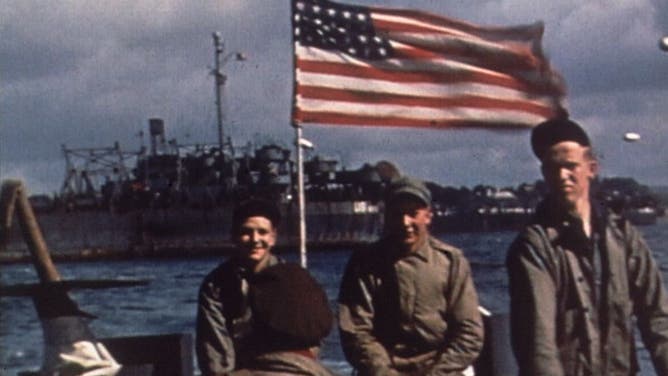
6th June 1944: US troops travel the English Channel on a barge en route to Normandy, France for the D-Day Invasion, World War II. An American flag flies behind them. (Photo by Anthony Potter Collection/Getty Images)

6th June 1944: US Army troops crowd into a navy landing craft infantry ship during the D-Day Invasion of Normandy, France, World War II. (Photo by US Navy/Getty Images)
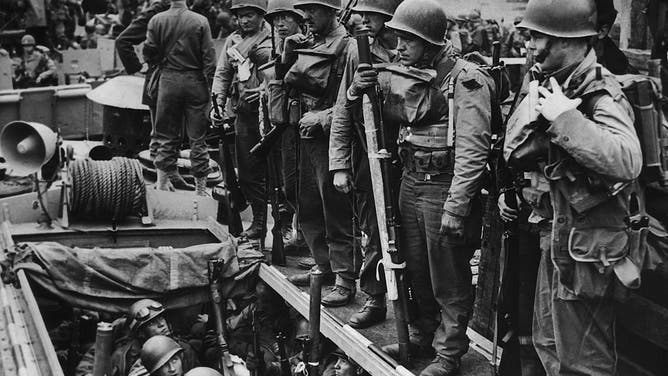
6th June 1944: American soldiers on an invasion craft during the D-Day landings. (Photo by PNA Rota/Getty Images)

American troops in full battle equipment set out in landing craft from England's shores enroute to the Normandy beaches June 6, 1944 (D-Day). (Photo by Photo12/UIG/Getty Images)
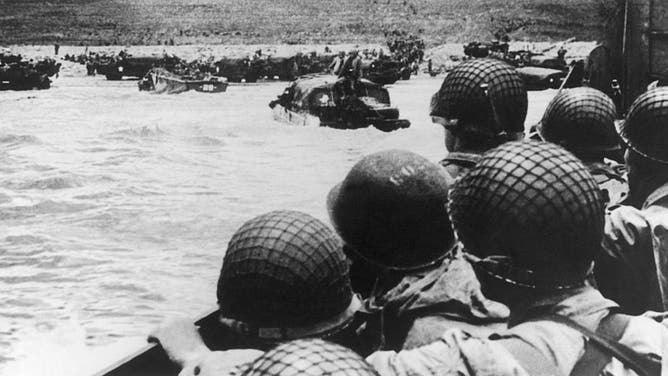
FRANCE - JUNE 01: Troops And Boats Arriving On A Beach Of Normandy On June 6, 1944, Or In The Days Which Followed. (Photo by Keystone-France/Gamma-Keystone via Getty Images)
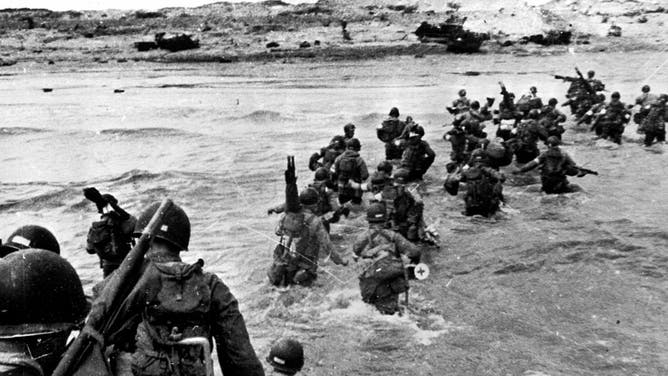
FRANCE - JUNE 06: World War II. Normandy Landings. American troops arriving at Utah Beach (dunes of Madeleine). June 6th, 1944. (Photo by Roger Viollet via Getty Images)
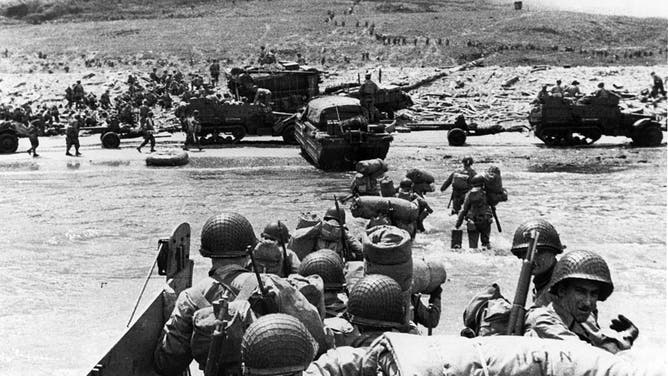
6th June 1944: American assault troops land at Omaha Beach in Normandy supported by Naval gunfire. (Photo by Wall/MPI/Getty Images)
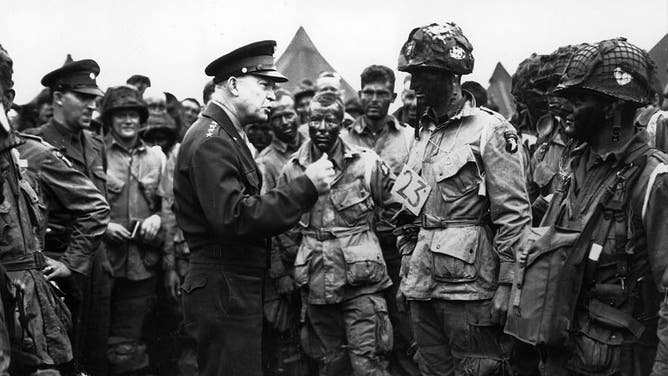
6th June 1944: Allied commander in chief General Dwight D. Eisenhower (1890 - 1969) talks to paratroopers of the 101st Airborne Division about to take off for the D-Day landings in France. (Photo by MPI/Getty Images)
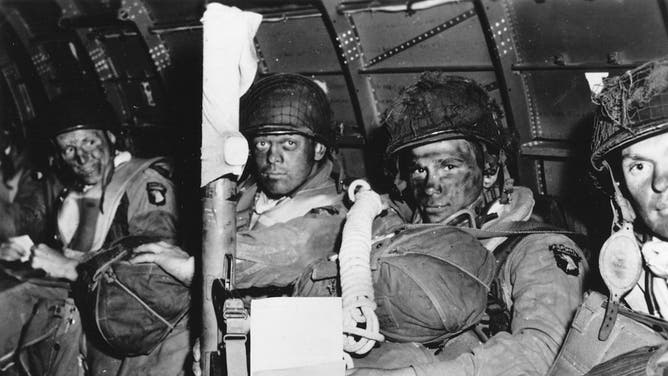
Resolute faces of paratroopers just before they took off for the initial assault of D-Day, June 6, 1944. The paratrooper in the foreground has just read General Eisenhower's message of good luck and clasps his bazooka in the other hand. (Photo by PhotoQuest/Getty Images)
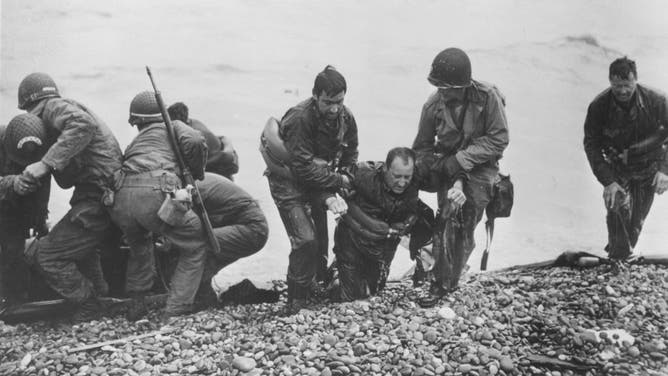
During the D-Day landings, American soldiers pull survivors from a sunken landing craft onto shore at Omaha Beach, Normandy, France, June 6, 1944. (Photo by US Army/Interim Archives/Getty Images)
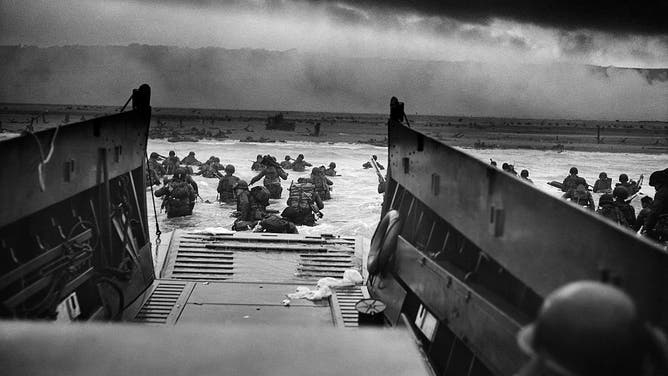
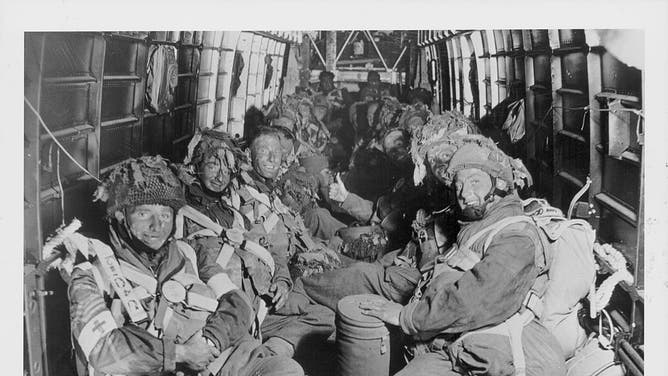
British paratroops of the 6th Airborne Division aboard an aircraft en route to their drop site during the D-Day Invasion of Normandy, World War II, June 6th 1944. (Photo by Archive Photos/Getty Images)
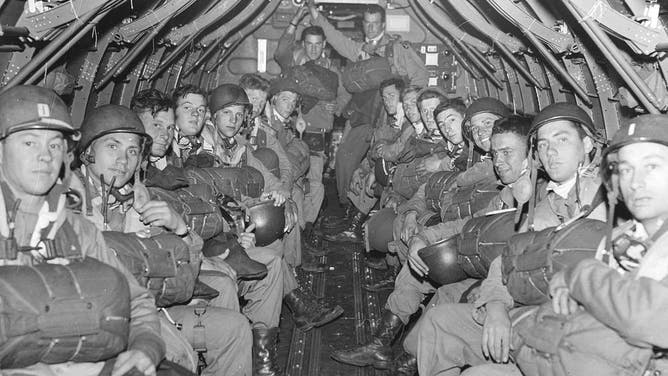
Set to be flown to spearhead the beginning of the battle for the liberation Europe, men of an infantry paratroop regiment are shown inside a Douglas C-47 of the Ninth Air Force Troop Carrier Command, over France, June 6, 1944. (Photo by PhotoQuest/Getty Images)
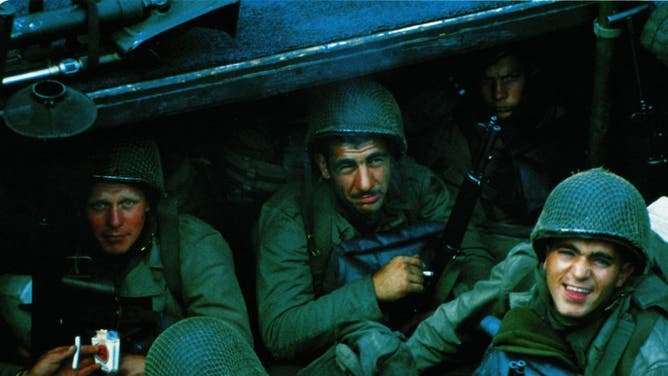
United States Rangers from E Company, 5th Ranger Battalion, on board a landing craft assault vessel (LCA) in Weymouth harbour, Dorset, 4th June 1944. The ship is bound for the D-Day landing on Omaha Beach in Normandy. Clockwise, from far left: First Sergeant Sandy Martin, who was killed during the landing, Technician Fifth Grade Joseph Markovich, Corporal John Loshiavo and Private First Class Frank E. Lockwood. They are holding a 60mm mortar, a Bazooka, a Garand rifle and a pack of Lucky Strike cigarettes. (Photo by Galerie Bilderwelt/Getty Images)

World War II, US soldiers on a Normandy Beach, June 6, 1944 (D)-Day. (Photo by: Photo12/Universal Images Group via Getty Images)
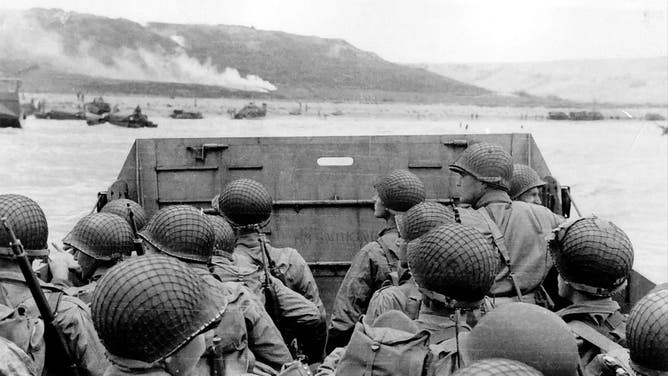
Photograph of American troops approaching Omaha Beach, Normandy, on D-Day. Dated 20th Century. (Photo by: Universal History Archive/Universal Images Group via Getty Images)
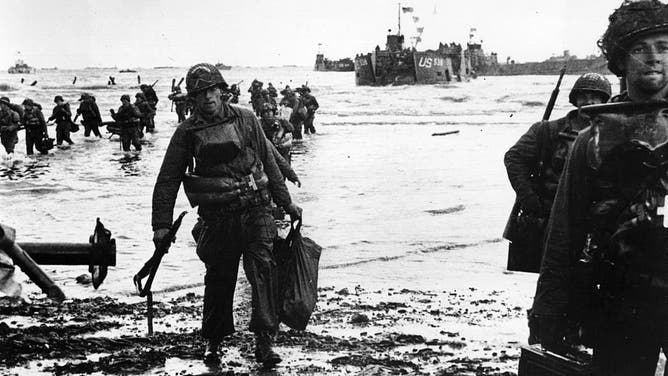
6th June 1944: American assault troops wading ashore on Omaha beachhead in Normandy. (Photo by Fox Photos/Getty Images)

6th June 1944: US troops travel the English Channel on a barge en route to Normandy, France for the D-Day Invasion, World War II. An American flag flies behind them. (Photo by Anthony Potter Collection/Getty Images)
6th June 1944: US troops travel the English Channel on a barge en route to Normandy, France for the D-Day Invasion, World War II. An American flag flies behind them. (Photo by Anthony Potter Collection/Getty Images)